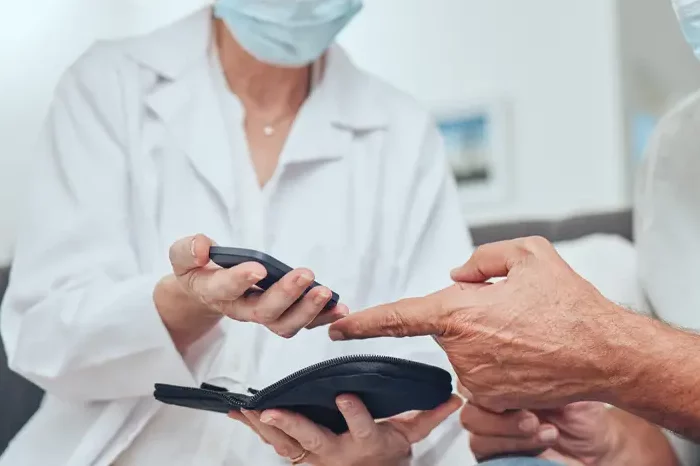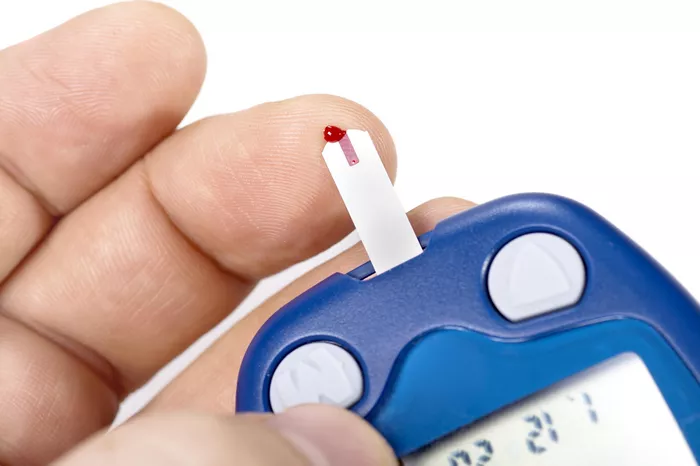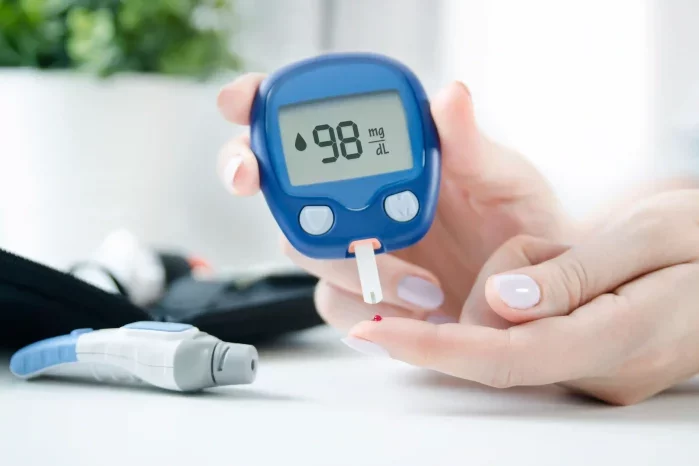Blood sugar monitoring is a cornerstone of diabetes management, allowing individuals with diabetes to keep track of their blood glucose levels and make informed decisions about their diet, exercise, and medication. The accuracy of blood sugar monitors is critically important, as it directly affects the ability of patients to manage their condition effectively. This article delves into the accuracy of blood sugar monitors, the factors that influence their performance, and the advancements in technology aimed at improving their precision.
Understanding Blood Sugar Monitoring
Blood sugar monitoring, also known as blood glucose monitoring, involves measuring the concentration of glucose in the blood. This is typically done using a portable electronic device called a blood glucose meter, which provides immediate feedback on blood sugar levels. The information obtained from these monitors is essential for managing diabetes, as it helps in adjusting insulin dosages, planning meals, and making lifestyle changes.
Types of Blood Sugar Monitors
Traditional Blood Glucose Meters: These devices require a small drop of blood, usually obtained by pricking the finger with a lancet. The blood is placed on a test strip that is inserted into the meter, which then displays the blood glucose level. These meters are widely used due to their reliability and affordability.
Continuous Glucose Monitors (CGMs): CGMs are advanced devices that provide real-time blood glucose readings. They consist of a sensor inserted under the skin, which measures glucose levels in the interstitial fluid. The sensor transmits data to a receiver or smartphone app, offering continuous monitoring and alerts for high or low blood sugar levels.
Flash Glucose Monitors: Similar to CGMs, flash glucose monitors use a sensor placed under the skin. However, instead of continuous data transmission, users scan the sensor with a reader to obtain glucose readings. These devices provide a balance between traditional meters and CGMs.
Factors Affecting the Accuracy of Blood Sugar Monitors
Calibration and Coding: Proper calibration of blood glucose meters is essential for accurate readings. Some meters require manual coding, where users input a code from the test strip vial into the meter. Incorrect coding can lead to inaccurate results. Modern meters often come with automatic coding to reduce errors.
Test Strip Quality: The quality and handling of test strips significantly impact accuracy. Strips can be affected by factors such as humidity, temperature, and expiration date. Using damaged or expired strips can lead to erroneous readings.
Sample Size and Application: Insufficient blood sample size or improper application on the test strip can result in inaccurate measurements. Most modern meters are designed to require only a small drop of blood, but it is still crucial to follow the manufacturer’s instructions precisely.
Environmental Conditions: Extreme temperatures and humidity can affect the performance of both blood glucose meters and test strips. It is important to store and use these devices within the recommended temperature range.
Interfering Substances: Certain substances, such as medications, vitamins, and other chemicals, can interfere with blood glucose readings. For example, high levels of vitamin C or acetaminophen can skew results.
User Technique: Proper technique in obtaining and applying the blood sample is crucial. Inconsistent methods can lead to variable results. Educating users on correct techniques is essential for maintaining accuracy.
Regulatory Standards for Blood Glucose Monitors
Regulatory bodies such as the U.S. Food and Drug Administration (FDA) and the International Organization for Standardization (ISO) set standards for the accuracy of blood glucose monitors. The ISO 15197:2013 standard requires that 95% of blood glucose readings should fall within ±15 mg/dL of the reference value for glucose concentrations below 100 mg/dL and within ±15% for concentrations above 100 mg/dL. The FDA has similar guidelines but also considers user-related factors in their assessment.
Accuracy of Traditional Blood Glucose Meters
Traditional blood glucose meters have improved significantly over the years, but their accuracy can still vary. According to studies, the accuracy of these meters often falls within the ranges specified by regulatory standards. However, real-world performance can be influenced by the aforementioned factors.
A study published in the Journal of Diabetes Science and Technology evaluated several popular blood glucose meters and found that while most devices met the ISO 15197:2013 criteria, there were still variations among different brands and models. Users are advised to select meters that have been independently tested and to regularly compare their meter readings with laboratory results to ensure ongoing accuracy.
Advancements in Continuous Glucose Monitoring (CGM) Technology
CGMs represent a significant advancement in diabetes management by providing continuous, real-time data. These devices offer several advantages over traditional meters, including trend analysis, alarms for hypo- and hyperglycemia, and reduced need for finger pricks.
The accuracy of CGMs is often assessed using the mean absolute relative difference (MARD), which measures the average percentage difference between CGM readings and reference glucose values. Modern CGMs, such as the Dexcom G6 and Abbott Freestyle Libre, have shown MARD values in the range of 9-12%, indicating high accuracy. Additionally, these devices are subject to rigorous clinical testing before approval, ensuring they meet stringent accuracy standards.
Challenges and Limitations of CGMs
Despite their advantages, CGMs are not without limitations. Factors such as sensor placement, calibration frequency, and physiological differences between interstitial fluid and blood glucose can affect accuracy. Some users may experience skin irritation or allergic reactions to the adhesive used for sensor placement.
Another challenge is the lag time between blood glucose and interstitial glucose readings, which can range from 5 to 15 minutes. This delay can be problematic during rapid changes in blood sugar levels, such as after meals or during exercise. Manufacturers are continuously working to reduce this lag time and improve overall accuracy.
Emerging Technologies and Future Directions
The field of blood sugar monitoring is rapidly evolving, with several emerging technologies aimed at improving accuracy and user experience. Some of these advancements include:
Non-Invasive Glucose Monitoring: Researchers are developing non-invasive methods to measure blood glucose levels without the need for blood samples. Techniques such as optical coherence tomography, Raman spectroscopy, and electromagnetic sensing are being explored. While these technologies hold promise, they are still in the experimental stage and face challenges related to accuracy and reliability.
Artificial Intelligence and Machine Learning: AI and machine learning algorithms are being integrated into blood glucose monitoring systems to enhance accuracy and predictive capabilities. These algorithms can analyze large datasets to identify patterns and predict glucose trends, helping users make proactive adjustments to their diabetes management.
Advanced Sensor Technologies: Improvements in sensor materials and design are enhancing the performance of CGMs. For example, new biocompatible materials and advanced manufacturing techniques are leading to more accurate and reliable sensors. Additionally, efforts are underway to develop multi-analyte sensors that can measure other biomarkers alongside glucose, providing a more comprehensive picture of a user’s health.
Closed-Loop Systems: Also known as artificial pancreas systems, closed-loop systems combine CGMs with insulin pumps to automate insulin delivery based on real-time glucose readings. These systems have shown promise in maintaining tight glucose control and reducing the burden of diabetes management. Ongoing advancements aim to improve the accuracy and reliability of these systems, making them more accessible to a wider population.
Practical Tips for Ensuring Accurate Blood Glucose Readings
Choose a Reliable Meter: Select a blood glucose meter that has been independently tested and meets regulatory standards. Look for meters with automatic coding and features that suit your lifestyle.
Proper Storage and Handling: Store your meter and test strips according to the manufacturer’s guidelines. Avoid exposing them to extreme temperatures and humidity.
Follow Instructions: Adhere to the manufacturer’s instructions for obtaining and applying blood samples. Ensure your hands are clean and dry before testing.
Regular Calibration: If your meter requires calibration, perform it regularly as instructed. For CGMs, follow the recommended calibration schedule to maintain accuracy.
Monitor Test Strip Quality: Use test strips within their expiration date and store them in their original container. Discard damaged or contaminated strips.
Cross-Check with Laboratory Results: Periodically compare your meter readings with laboratory results to verify accuracy. This is especially important if you notice significant discrepancies.
Be Aware of Interfering Substances: Inform your healthcare provider about any medications or supplements you are taking that might interfere with glucose readings. Follow their guidance on managing potential interferences.
Educate Yourself: Stay informed about the latest advancements in blood sugar monitoring technology. Attend diabetes education programs and consult with your healthcare team to optimize your diabetes management.
Conclusion
The accuracy of blood sugar monitors is a critical aspect of diabetes management. While traditional blood glucose meters and CGMs have made significant strides in accuracy, various factors can influence their performance. Ongoing advancements in technology, including non-invasive monitoring, AI integration, and improved sensor designs, hold promise for even more accurate and user-friendly devices in the future. By understanding the factors that affect accuracy and following best practices for blood sugar monitoring, individuals with diabetes can achieve better control over their condition and improve their overall quality of life.
Related topics:
At What Glucose Level Are You Considered Diabetic


























